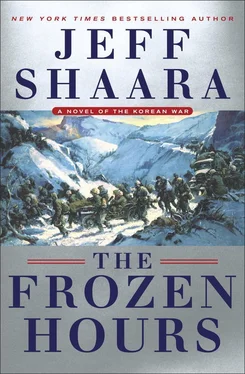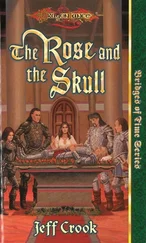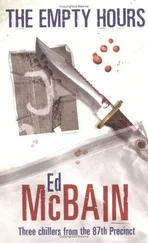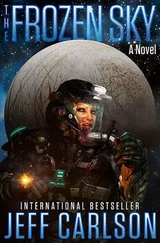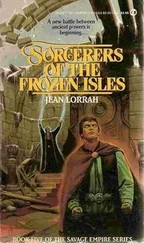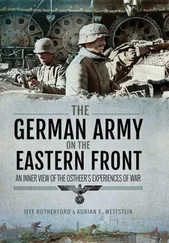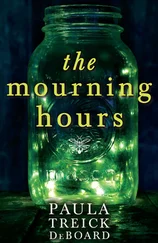In 1945, with the dropping of the atomic bombs on two Japanese cities, World War II concludes and the Koreans ecstatically welcome their liberation. But the nation suffers from fragmentation, with no official government and no cohesive political infrastructure. Into this void come the superpowers, the Soviet Union and the United States, who move in to establish their own spheres of self-interest. In an agreement solely based on convenience, Korea is divided along what appears on a map to be the most logical geographical boundary, the 38th parallel, which neatly splits the country in two. The Soviets control the North, the Americans the South. As the conflicts between the two nations blossom into the Cold War, the 38th parallel takes on a different importance, as a border between East and West. Exhausted by World War II, neither side pushes hard for a direct military confrontation, and the Soviets are the first to blink, pulling their troops out of North Korea in 1948. They leave behind a government controlled by their handpicked ruler, Kim Il-sung, who will make few moves without Soviet approval. In the South, the Americans have made a feeble effort to inspire a democratic regime, which is now headed by Syngman Rhee. Rhee professes deep friendship for the United States, but his rule over South Korea is autocratic at best, and a brutal dictatorship at worst. The Americans, eager to support anticommunist governments, embrace Rhee as a valued ally, seemingly oblivious to the abuses he inflicts upon his own people.
As the war of words begins to heat up between North and South Korea, Kim Il-sung quietly builds a vast armada, strengthened by military aid from the Soviets, who come to regard him as a significant thorn in their side. The Soviets are not at all enthusiastic about Kim’s saber-rattling, or his poorly disguised ambition to reunite Korea under his own rule. Gradually, Joseph Stalin withdraws direct Soviet support for Kim and Kim begins to seek another ally who would support his goals. He thus forms an alliance with the Communist Chinese, who are now led by Mao Tse-tung.
Comforted by the withdrawal of the Soviets, the American government relaxes considerably, believing that the risk of confrontation in this part of Asia has virtually disappeared. Though American forces occupy bases in Korea, they are a faint shadow of the military that had defeated the Japanese. By 1950, in the five short years since the end of World War II, the extraordinary military might of the United States has been deflated almost completely. Throughout the world, governments are far more concerned that the next great war might begin along the hostile borders that now spread through Europe. What military strength the Americans still possess is mostly positioned where they face off against the Soviets along the border between East and West Germany. Korea, like most of Asia, has become an afterthought.
In Tokyo, the American and Allied occupation forces are commanded by General Douglas MacArthur, who rules over the Japanese as a benevolent dictator. The Japanese not only accept MacArthur’s presence, they welcome it, and the American military there is regarded with unexpected affection by the Japanese people. Thus are the Americans convinced that all is well in Asia, and their troop presence in Japan, as well as Korea, is not only weakened but toothless. The troops sent to Korea in support of Rhee are poorly trained and poorly equipped. The South Koreans fare no better, their American occupiers believing that allowing Rhee to control a strong military might in fact create more problems than the Americans are willing to tolerate. While Rhee’s army flounders under disinterested American supervision, Kim Il-sung has built the North Korean army into a powerful fist.
In March 1950, the American intelligence community concludes that the North Koreans are preparing an invasion of the South. But those reports are dismissed at all levels of the American government, including Douglas MacArthur. Such intelligence noise is regarded with the same lack of seriousness paid to the boisterous threats being made by various communist governments worldwide, none of which are considered legitimate.
On June 25, 1950, the North Koreans open a massive artillery barrage across the 38th parallel, followed by the advance of ten divisions of well-trained and well-equipped ground forces. Backed up by Soviet-made tanks, manned by well-trained Korean crews, the invasion drives southward in four major prongs. As South Korean defense forces dissolve, woefully unable to blunt the invasion, Kim Il-sung tells the world: “The South Korean puppet clique has rejected all methods for peaceful reunification proposed by the Democratic People’s Republic of Korea and dared to commit armed aggression north of the Thirty-eighth parallel. The Democratic People’s Republic of Korea ordered a counterattack to repel the invading troops.”
Though Kim’s absurd declaration is mocked in Washington, within hours the American government begins to understand that this invasion is more than meaningless posturing. Petitioning the United Nations Security Council, the Americans push for blanket condemnation of the North Korean attack. The vote is unanimous in favor of supporting South Korea only because the Soviets, who could have simply vetoed the measure, are not in attendance that day. Thus, for the first time in its history the United Nations enter a war, as defenders of South Korean autonomy. The most logical choice to command a hastily formed conglomerate of military forces is General MacArthur.
To those who question this strong show of American resolve to go to war over what many in the United States see as an obscure and insignificant land, President Harry Truman describes this fight as a crusade against the spread of worldwide communism, that the Soviets should be taught that our resolve in this matter is absolute. The assumption in Washington is that the Soviets are pulling all the strings, Kim’s army merely a proxy for Soviet intentions to dominate the West, one conflict at a time. No one officially entertains the idea that Kim’s only real ally is Red China.
On June 26, one day after the start of the invasion, President Truman receives the following message from Syngman Rhee:
“Things are not going well militarily.”
It is a mammoth understatement. Backed by more than sixteen hundred artillery pieces, some ninety thousand North Korean troops have virtually erased any defensive lines the South Koreans can put in their path, and within three days they easily capture the South Korean capital, Seoul. As stunned American and Allied troops begin to mobilize for a defense against the invasion, they are forced into a small portion of southeast Korea, framed by a small mountain range to the north and the Naktong River to the west, around the city of Pusan. Militarily, all that remains of South Korea is a besieged area now called the Pusan Perimeter, an area fifty by one hundred miles, pressed against the Sea of Japan. Though the South Koreans and their allies, primarily the Americans, are pressed into a desperate situation, the North Koreans have overplayed their hand. As they lengthen the distance from their own border, so too do they stretch out their supply lines. Commanded by American army general Walton Walker, the Americans strengthen the defenses along the Pusan Perimeter, while the North Korean juggernaut grows slowly weaker. Though portions of fourteen North Korean divisions press toward the Allied positions, not even Kim Il-sung has anticipated that his army would drive so far so quickly. Despite the jubilation emerging from Kim’s propaganda machine, the Allied forces continue to build, forcing a virtual stalemate along the perimeter. By mid-August, Kim’s army is outnumbered, though the confidence of the Allied forces remains at a low ebb. Faced with little change to the situation, Douglas MacArthur devises a new and audacious strategy to break the siege. Ignoring his advisors, and the strategists in Washington, MacArthur plans an invasion of his own, an amphibious assault against the western coast of South Korea, at the port of Inchon. MacArthur’s plan is to drive American soldiers and Marines inland, far behind the North Korean positions, slicing through any remaining supply lines, thus squeezing the North Korean troops between two major forces. Few officers in MacArthur’s camp believe the plan will work, many referring to the odds as “a five-thousand-to-one shot.”
Читать дальше
